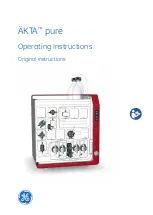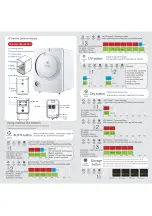
72
It is recommended/required that annual electrical continuity tests be performed on exposed conductive materials on the
medical system to the protective ground on the medical system. Regular testing will help ensure that proper protective
grounding is maintained. This test should always be performed after installation and maintenance. Additionally, this test should
be performed on a regular maintenance basis.
Troubleshooting
Noisy Data
If the acquired data does not appear appropriate or appears noisy, the following troubleshooting steps are
recommended. Also refer to Chapter 2 Safety, Warnings and Cautions: Factors that Could Affect Data.
Ask the patient to relax, particularly the muscle area being tested.
Make sure that there is a secure connection between the amplifier and the computer.
Inspect and replace all system cables that are worn or damaged.
Unplug any devices on the same circuit such as mechanical beds or other potential sources of
interference.
Turn off florescent lighting. Do not use dimmer switches.
Check the electrodes:
•
Make sure that the patient electrodes are connected to the correct channel in the
amplifier and fit securely.
•
Do not use electrode cables that are broken, frayed or have kinks
•
Use large surface ground electrodes
Check the protocol test settings to insure they are appropriate for the test. If unsure, use the
Natus default settings:
•
LFF
–
Filters out low-frequency interference.
•
HFF – Filters out high-frequency interference.
•
Notch filter – Minimizes 50/60Hz electrical interference.
•
Gain – Optimizes the signal at the amplifier.
To improve NCS:
•
Clean the skin surface and use electrode gel at the stimulation site
•
Place ground between the stimulation and recording site
•
Use data averaging to improve the signal-to-noise ratio
•
Use bi-phasic stimulation
•
Use Signal Enhance function to reduce the stimulus artifact
Use the live monitor window to detect unwanted noise or artifacts such as extraneous spikes or
50/60 Hz.
External Artifacts
In the event that an environmental artifact (e.g. ESD, line voltage fluctuations, etc.) is of sufficient intensity and/or
duration to adversely affect system performance, the system is designed to detect this condition and send a message
















































